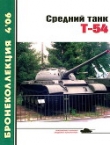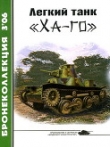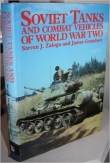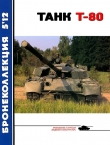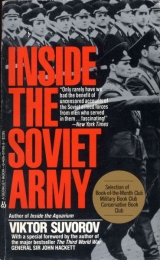
Текст книги "Inside The Soviet Army"
Автор книги: Viktor Suvorov
Жанр:
Публицистика
сообщить о нарушении
Текущая страница: 7 (всего у книги 26 страниц)
In the mid-1970s some doubt arose as to its reliability when a South Korean aircraft lost its way and flew over Soviet Arctic territory for some considerable time before being forced down by a Soviet SU-15 interceptor. However, the reasons for this delay can be fully explained; we have noted that interceptor aircraft do not represent the main strength of the ADF, which lies in its surface-to-air missiles. The territory across which the lost aircraft flew was quite unusually well-equipped with SAMs, but there is simply no reason to use them against a civil aircraft. At the same time, because of the deep snow which lay in the area, hardly any interceptors were stationed there. Their absence was compensated for by an abnormally large number of SAMs, ready to shoot down any military aircraft. In this unusual situation, once the invader had been found to be a civil aircraft, it became necessary to use an interceptor brought from a great distance. This aircraft took off from Lodeynoye Polye and flew more than 1,000 kilometres, in darkness, to meet the intruder. In an operational situation it would not have been necessary to do this. It would be simpler to use a rocket.
Nevertheless, despite everything, the ADF has its Achilles heel. The fastest aircraft are flown by men who detest socialism with all their hearts. The pilot Byelenko is by no means unique in the ADF.
The Land Forces
1
The Land Forces are the oldest, the largest and the most diversified of the Services making up the Armed Forces of the Red Army. In peacetime their strength totals approximately 2 million, but mobilisation would bring them up to between 21 and 23 million within ten days.
They contain seven arms of service:
Motor-rifle Troops
Tank Troops
Artillery and Rocket Troops of the Land Forces
Air Defence Troops of the Land Forces
Airborne Assault Troops
Diversionary Troops (Spetsnaz)
Fortified Area Troops
The existence of the last three is kept secret.
In their organisation and operational strength, the Land Forces can be seen as a scaled-down model of the entire Soviet Armed Forces. Just take a look at their structure: the Strategic Rocket Forces are subordinated to the Stavka; the Land Forces have their own rocket troops; the Air Defence Forces are subordinated to the Stavka; the Land Forces have their own air defence troops. They also have their own aircraft, which are independent of the Air Forces. The Air Defence Forces, in their numbers and equipment the strongest in the world, are subordinated to the Stavka; the Land Forces also have their own airborne troops which, using the same yardstick, are the second strongest in the world.
The Commander-in-Chief of the Land Forces has no more than an administrative function. His headquarters contains neither an Operational nor an Intelligence Directorate. All operational planning is carried out by the mixed commands of the Fronts, Strategic Directions or General Staff. The Commander-in-Chief's responsibilities are limited to the equipment, provisioning and training of his forces. However, despite the fact that he has no responsibility for the direction of operations the C-in-C Land Forces is still a highly influential administrator. Clearly, anyone who is responsible for the development and supply of forty-one Armies, including eight Tank Armies deserves respect.
The Commanders of the various arms of service of the Land Forces, too, have purely administrative functions. The direction of operations, as we already know, is the function of mixed all-arms commands, which are not subordinated for this function to either the C-in-C or the Commanders of individual arms of service.
2
The Motor-Rifle Troops
Each motor-rifle section has a strength of eleven. One man acts as assistant to the rocket launcher and is jokingly referred to as the missile transporter. He does indeed carry three rockets, in a satchel. Each of these has a warhead capable of penetrating the armour of any modern tank, booster and sustainer engines, a spin stabiliser, a turbine, a fin assembly and a tracer compound.
His are not the only rockets in the section. It is also equipped with anti-aircraft rockets with seeker heads, which enable them to distinguish hostile aircraft from friendly ones and to destroy them. In addition, the section has four 9-M-14 `Malyutka' rockets which have an automatic guidance system. All this in one infantry section.
The section's BMP-1 combat vehicle has an automatic 73mm gun and three machine guns and has sufficient fire-power, manoeuvrability and protection to take on any modern light tank. The section also has three radio sets, sensors for the detection of radioactivity and gas and other complex devices in addition to its ordinary infantry equipment.
At this, the lowest, level, we find not a true infantry formation but a hybrid of tank, anti-tank, SAM, chemical, sapper and other sub-units.
The infantry is the oldest of the arms of service. All the remainder originated later and were developed as additions or reinforcements to the infantry. From our examination of the infantry section we see that the modern infantry is an arm of service which, even at its lowest level, has absorbed elements of many others.
The concept of the infantry, not as cannon fodder, but as the framework of the entire Armed Forces, the skeleton on which the whole of the remainder develops, has been held for a long time by Soviet generals. After the last war, all Soviet infantry officer training schools were renamed Officer Cadet Academies, and began to turn out, not run-of-the-mill platoon commanders, but commanders with a wide range of knowledge, able to organise cooperation between all arms of service in the battlefield, in order to ensure joint success.
It is for this reason that today's officers are not called either infantry or motor-rifle commanders, but all-arms commanders.
The organisation of a normal Soviet regiment which, by tradition, is still called a motor-rifle regiment, is as follows:
Command headquarters
Reconnaissance company
Signals company
Tank battalion (three companies)
Three motor-rifle battalions (each of three companies and one automatic mortar battery)
A battalion of self-propelled howitzers (three fire batteries and one control battery)
A battery of Grad-P multiple rocket launchers
A SAM battery
An engineer company
A chemical defence company
A maintenance company
A motor transport company
In all, the regiment has 27 companies, only 9 of which are motor-rifle companies. It is significant that, in a so-called `motor-rifle' regiment, there are 10 artillery battery commanders-that is to say, one more than the number of motor-rifle company commanders.
If we move a little higher, to the level of a division, we find that, surprisingly, it is still referred to as a `motor-rifle' division. We will look at the organisation of a motor-rifle division later; for the present we will simply note that it contains a total of 165 companies and batteries. Of these only 28 are motor-rifle companies; it also has 23 tank companies and 67 artillery batteries (mortar, anti-aircraft and rocket). The remainder is made up of reconnaissance, signal and engineer, chemical and other companies.
The motor-rifle troops make up the bulk of the Soviet forces. Organisationally, they consist of 123 divisions and of an additional 47 regiments, which form part of the complement of tank divisions. In addition, there are motor-rifle battalions serving in fortified areas and also with the Navy's marine infantry brigades.
In peacetime motor-rifle sub-units are divided into those with normal equipment (armoured personnel carriers) and those equipped with infantry combat vehicles (BMPs). This is today's version of the age-old division between light and heavy infantry, between grenadiers and chasseurs.
In theory all motor-rifle regiments in tank divisions and one regiment in each motor-rifle division should be equipped with BMPs. In practice, this depends upon the output of the defence industries and upon their ability to supply combat equipment to the forces. In many inland military districts divisions have not received the BMPs allocated to them. By contrast, divisions stationed in East Germany have two rather than one BMP regiment.
Sub-units equipped with BMPs have much greater fire – and striking-power than their normal motor-rifle equivalents. This is not only because a BMP has better protection, armament and manoeuvrability than an armoured personnel carrier. BMP sub-units also have far more supporting weapons. For instance, a motor-rifle battalion stationed on Soviet territory has a mortar platoon. An equivalent BMP battalion has a battery instead of a platoon. Moreover, these are not standard but automatic mortars, and they are self-propelled rather than towed. A standard motor-rifle regiment has a howitzer battery, or in some cases a battalion of towed howitzers. A BMP regiment has a howitzer battalion equipped with self-propelled amphibious howitzers and a further battery of `Grad-P' multiple rocket launchers.
BMP sub-units are the first to receive new anti-tank, anti-aircraft, engineering and communications equipment. They are, in fact, the trump suit in the pack.
3
The Tank Forces
The Tank Forces represent the main striking power of the Land Forces. Their organisation is simple and well-defined. Every unit commander has his own tank assault force, of a size appropriate to his position. The commander of a motor-rifle regiment has a tank battalion at his disposal. The commander of a motor-rifle division has his own tank regiment. An Army commander has one tank division and a Front Commander a Tank Army. Finally, the Commander-in-Chief of a Strategic Direction has a Group of Tank Armies. Combat operations at each level are organised according to established principles. An advance by a motor-rifle regiment is, essentially, an advance by a tank battalion which is supported by all the other battalions and companies of the regiment. This principle applies at all levels. You could, in fact, say that an advance by a Strategic Direction is really a break-through by a Tank Army Group supported by the operations of the three or four Fronts which belong to that Direction.
In addition to this basic striking force, Front Commanders and C-in-Cs of Strategic Directions may keep independent tank divisions in reserve, using them for rapid relief of the divisions which suffer the worst losses. Besides this, however, each commander, from divisional level upwards, has what might be called a personal tank guard. Besides the tank regiment which is his main striking force, a division commander has an independent tank battalion. Thus, a motor-rifle division has seven tank battalions in all; one in each of its three motor-rifle regiments, three in its tank regiment and the independent battalion. This battalion is entirely different from the others. Whereas the ordinary tank battalions have 31 tanks (3 companies of 10 each and one for the battalion commander), an independent battalion has 52 tanks (5 companies of 10 each, one for the battalion commander and the divisional commander's own tank). Unlike the others, an independent tank battalion has reconnaissance, anti-aircraft, engineer and chemical platoons. In its make-up it is more like a small, independent tank regiment, than a large battalion. In addition, the independent tank battalions are the first to receive the latest equipment. I have seen many divisions equipped with T-44 tanks while the independent tank battalions had T-10Ms, which have then received T-55s, while the independent battalions got T-72s. The divisional commander will carefully and patiently assemble all his best crews in this battalion. The commander of a motor-rifle regiment will throw his tank battalion into the thick of a battle, and a divisional commander will do the same with his tank regiment but he will keep his independent tank battalions in reserve. These protect respectively, the division's headquarters and the division's rocket battalion. These are not, of course, their main functions, but fall to the lot of the independent battalions because they almost always function as reserves.
But let us suppose that during a battle a situation arises in which a commander must throw in everything he has, a situation which can result in either victory or disaster. This is the moment at which he brings his own personal guard into the operation, a fresh, fully-rested battalion, of unusual size, made up of his best crews and equipped with the best tanks. At this moment a divisional commander is risking everything and for this reason he may head this, his own independent, tank battalion.
An Army Commander, too, in addition to the tank division which forms his striking force, has an independent tank battalion to act as his personal guard. He puts it into action only at the last possible moment and it may be with this battalion that he meets his own death in battle. In addition to his Tank Army, each Front Commander has an independent tank brigade, consisting of the best crews in the whole Front and equipped with the best tanks. Normally a Front's independent tank brigade has four or five battalions and one motor-rifle battalion. The commander of a Strategic Direction, too, has his personal tank guard, in addition to his Tank Army Group. This guard consists of a single special independent tank division or, in some cases, of a tank corps made up of two divisions.
In all, the Tank Forces have 47 tank divisions, 127 regiments, serving with motor-rifle divisions and more than 500 battalions, either serving with motor-rifle regiments or acting as reserves for commanders of varying ranks. In peacetime their total strength is 54,000 tanks.
4
The Artillery and Rocket Troops of the Land Forces
After the end of the Second World War, the Rocket Troops were treated as a separate arm of service, not forming part of any one of the Armed Services but subordinated directly to the Minister of Defence. In 1959 they were split up. The Strategic Rocket Forces were established as a separate Armed Service. Those rocket troops who were not absorbed by the new Service were taken over by the Land forces and united with the Artillery to form the Artillery and Rocket Troops, as one of the constituent arms of service of the Land Forces.
At present this arm of service is equipped with four types of artillery-rocket, rocket launcher (multi-barrelled, salvo-firing), anti-tank and general purpose (mortars, howitzers and field guns). Each commander has at his disposal the artillery resources appropriate to his rank. Commanders of divisions and upwards have some of each of all four types of artillery weapon. Thus a motor-rifle division has one rocket battalion, one battalion of multi-barrelled rocket launchers, one anti-tank battalion and a howitzer regiment of three battalions for general support. We will discuss the quantity of fire weapons available to commanders of differing ranks when we come to talk about operational organisation.
5
The Air Defence Troops of the Land Forces
We have already spoken of the existence of two separate air defence systems-national and military. The two are unconnected: the difference between them is that the national system protects the territory of the Soviet Union and is therefore stationary while the military system is an integral part of the fighting services and moves with them in order to protect them from air attack.
Organisationally, each infantry section, with the exception of those which travel in platoon commanders' vehicles, contains one soldier armed with a `Strela 2 anti-aircraft rocket launcher. There are two such launchers in each platoon. The seeker heads with which they are fitted enable rockets fired from these launchers to shoot down enemy aircraft flying at heights of two kilometres and at distances of four kilometres. In every tank platoon, in addition to the anti-aircraft machine-guns carried by each tank, one of the leaders has three of these launchers, which are carried on the outside of the tank's turret.
Each motor-rifle and tank regiment has an anti-aircraft battery, armed with 4 ZSU-23–4 `Shilka' self-propelled rocket launchers and with 4 `Strela 1 launchers (known in the West as the SA-9). These two systems complement each other and are highly effective, the Shilka especially so. I have watched a Shilka working from a stony, ploughed field, belching out an uninterrupted blast of fire against small balloons released, without warning, from a wood a couple of kilometres away. The results it achieved were quite overwhelming. The British reference book, Jane's, is quite right to describe the Shilka as the best in the world.
The officer in charge of the anti-aircraft defence of each motor-rifle and tank regiment coordinates the operations of his battery and also those of all the Strela-2 launchers.
Each motor-rifle and tank division has one SAM regiment, armed with `Kub' (SA-6) or `Romb' (SA-8) rockets. Each Army has one SAM brigade, armed with `Krug' (SA-4) rockets.
In addition to all these, a Front Commander has under his command two SAM brigades with `Krug' rockets, several regiments with `Kubs' or `Rombs' and several AAA regiments, armed with 57mm and 100mm anti-aircraft guns.
6
The Airborne Assault Troops
Although the Airborne Assault troops wear the same uniform as airborne troops, they have no connection with them. Airborne troops are under the direct control of the Supreme Commander; they use transport aircraft and parachutes for their operations. By contrast, the Airborne Assault troops form part of the Land Forces and are operationally subordinate to a Front Commander. They are transported by helicopter and do not use parachutes. Moreover, their sub-units use helicopters not only as a means of transport but as fighting weapons.
In Soviet eyes, the helicopter has nothing in common with conventional aircraft; it is regarded virtually as a tank. At first this may seem a strange idea, but it is undeniably well founded. No aircraft can seize enemy territory; this is done by tanks, artillery and infantry working together. Helicopters are therefore regarded as belonging to the Land Forces, as tanks which do not fear minefields, mountains or water obstacles, as tanks with high fire-power and great speed but which have only limited protection.
The airborne assault troops were established in 1969. Their `father' and guardian angel was Mao. If he had never existed nor would they. Soviet generals had been pressing for their introduction since the beginning of the 1950s, but there were never sufficient resources for their creation and the decision to bring them into service was postponed from one five-year plan to another. However, in 1969, armed clashes took place on the frontier with China, and Soviet generals declared that they could only defend a line 1,000 kilometres in length with tanks which could be concentrated within a few hours at any one of the sectors of this enormous frontier. So the MI-24 made its appearance-a flying tank which no weapon has yet managed to shoot down in Afghanistan.
Military helicopters, which thus originated primarily as a weapon against China, actually made their first appearance with the Soviet forces in Eastern Europe. This was because the situation on the Chinese frontier improved; that on the frontiers with the West can never improve.
Organisationally, the airborne assault troops consist of brigades, subordinated to Front Commanders. Each brigade is made up of one helicopter assault regiment (64 aircraft), one squadron of MI-26 heavy transport helicopters and three airborne rifle battalions.
The airborne assault brigade is used in the main axis of advance of a Front in conjunction with a Tank Army and under air cover provided by an Air Army.
In addition to this brigade, a Front also has other airborne assault subunits, which do not represent part of its establishment. Each Army has one helicopter transport regiment, which is used to air-lift ordinary motor-rifle sub-units behind the enemy's front line. In each motor-rifle regiment, one battalion in three is trained, in peacetime, for operations with helicopters. Thus each division has three battalions trained for this purpose and each Army has thirteen such battalions.
Airborne assault forces are growing continually. Very soon we can expect to see airborne assault brigades with every Army and airborne assault divisions with every Front.
7
Diversionary Troops (SPETSNAZ)
Diversionary troops, too, wear the same uniform as airborne troops without having any connection with them. Unlike airborne assault troops, they are parachuted from aircraft into the enemy's rear areas. However, they differ from normal airborne troops in not having heavy equipment and in operating more covertly.
These SPETSNAZ forces form the airborne forces of the Land Forces. They are used in the enemy's rear to carry out reconnaissance, to assassinate important political or military figures and to destroy headquarters, command posts, communications centres and nuclear weapons.
Each all-arms or tank army has one SPETSNAZ company, with a complement of 115, of whom 9 are officers and 11 are ensigns. This company operates in areas between 100 and 500 kilometres behind the enemy's front line. It consists of a headquarters, three diversionary platoons and a communications platoon. Depending on the tasks to be carried out, the officers and men of the company divide into as many as 15 diversionary groups, but during an operation they may work first as a single unit, then split into 3 or 4 groups, then into 15 and then back again into one.
Usually, SPETSNAZ companies are dropped the night before an Army begins an advance, at a moment when the anti-aircraft and other resources of the enemy are under greatest pressure. Thereafter, they operate ahead of the advancing sub-units of the Army.
Each Front has a SPETSNAZ brigade, consisting of a headquarters company and three diversionary battalions. In peace-time the SPETSNAZ companies of the Armies of the Front are combined as a SPETSNAZ battalion, which explains why it is sometimes thought that there are four battalions in each diversionary brigade. In wartime this battalion would split into companies which would join their respective Armies.
Each of the Front's three battalions operates in the enemy's rear in exactly the same way as the SPETSNAZ companies of the Armies. Each battalion can split into as many as 45 diversionary groups and the three together can therefore produce a total of up to 135 small groups. But, if necessary, a SPETSNAZ brigade can operate at full strength, using between 900 and 1,200 troops together against a single target. Such a target might be a nuclear submarine base, a large headquarters, or even a national capital.
The headquarters company of a SPETSNAZ brigade is of particular interest. Unlike both the SPETSNAZ battalions and normal Army companies, it is made up of specialists-between 70 and 80 of them. This HQ company forms part of the SPETSNAZ brigade and even many of the latter's officers may not be aware of its existence. In peacetime this company of specialists is concealed within the sports teams of the Military District. Boxing, wrestling, karate, shooting, running, skiing, parachute jumping-these are the sports they practice. As members of sports teams they travel abroad, visiting places in which they would kill people in the event of a future `liberation'.
These Soviet sportsmen/parachutists, holders of most of the world's sporting records, have visited every national capital. They have made their parachute jumps near Paris, London and Rome, never concealing the fact that the sporting association which has trained them is the Soviet Army. When Munich, Rome and Helsinki applaud Soviet marksmen, wrestlers and boxers, everyone assumes that these are amateurs. But they are not-they are professionals, professional killers.
In addition to these small companies within the diversionary brigades of the Fronts, there are also SPETSNAZ Long-Range Reconnaissance Regiments. The Commander-in-Chief of each Strategic Direction has one of these regiments. The best of these regiments is stationed in the Moscow Military District. From time to time this regiment goes abroad in full strength. On these occasions it goes under the title of the Combined Olympic Team of the USSR.
The KGB, as well as the Soviet Army, is training its diversionary specialists. The difference, in peacetime, between the two groups is that the Soviet Army contingent always belongs to the Central Army Sports Club while those from the KGB are members of the `Dynamo' Sports Club. In the event of war, the two diversionary networks would operate independently of one another, in the interests of reliability and effectiveness. But a description of the diversionary network of the KGB lies outside our field.
8
The Fortified Area Troops
For many decades, the problem of defence was not the Soviet Union's first priority. All its resources were devoted to strengthening its striking power and its offensive capabilities. But then China began to present a challenge. Of course, both Soviet and Chinese leaders knew that Siberia could never provide a solution to China's territorial problems. Siberia looks large on the map but even the great conqueror Jenghiz Khan, who had defeated Russia, China and Iran, by-passed Siberia, which is nothing more than a snowy desert. Both Soviet and Chinese politicians realise-as do their Western opposite numbers-that the solution of the Chinese territorial problem lies in the colonisation of Australia. Nevertheless, the Soviet Union takes steps to strengthen its frontiers, even though it is certain that the West will be the first victim of China, as it was the first victim of Hitler and of the Iranian students.
The Soviet Union knows from its own experience how peace-loving a socialist country becomes when its economy, and consequently its army, is weak. But it also knows what can be achieved by a country whose whole economy has been nationalised-a country in which everything of value belongs solely to the government and in which all resources can therefore be concentrated in order to achieve a single goal. Knowing this, the Soviet Communists are preparing for every possible contingency in good time.
In 1969 the problem of defending the 7,000 kilometre frontier with China became particularly acute. The calculation involved was a simple one: one division can hold a sector of 10 or, at the outside, of 15 kilometres of the frontier. How many divisions would be needed to defend 7,000 kilometres?
Since there was no question of using the old methods of conducting operations, new methods-new solutions-were found. We already know that one of the most important of these was the establishment of the airborne assault troops. A second was the introduction of a second arm of service-the Fortified Area Troops. This represented a return to the age-old idea of building fortresses.
Today's Soviet fortresses-the Fortified Areas-are either completely new or are established in areas in which there were old defences, built before the Second World War, which withstood repeated attacks by the Japanese army.
Modern Fortified Areas are, of course, so constructed as to survive a nuclear war. All fortifications have been strengthened against nuclear attack and contain automatic systems for the detection of poisonous gas and air filtration plants.
Today, the old reinforced concrete structures are hardly ever used for operational purposes. Instead, they serve as underground command posts, stores, barracks, assembly points, communications centres, or hospitals. All operational structures are being newly built. Here the Soviet Union finds itself in a very favourable situation, because it has retained tens of thousands of old tanks. These are now installed in reinforced concrete shelters so that only the turrets appear above the ground. The turrets themselves are strengthened with additional armour plating, often taken from obsolete warships. Sometimes the tops of turrets are covered with an additional shield made of old railway lines; the whole is then carefully camouflaged. Under the hull of the tank is a reinforced concrete magazine for several hundred shells and a shelter for personnel. The whole forms an excellent firing point, with a powerful (often 122mm) tank gun, two machine guns, an excellent optical system, reliable defence against a nuclear blast and an underground cable connecting it with the command post, With these resources, two or three soldiers can defend several kilometres of frontier. Since these tank turrets cover one another and since, in addition to them, the fortified areas contain thousands of gun turrets taken from obsolete warships, some of which contain quick-firing 6-barrelled 30mm guns, which are uniquely effective against infantry and aircraft, it would clearly be extremely difficult to break through such a line of defence. The Soviet Union has bitter memories of the way little Finland was able to halt the Soviet advance in this way in 1940.
Each fortified area is spaciously set out, to increase its ability to withstand the effects of nuclear weapons. Organisationally, each fortified area is manned by five or six battalions of troops, a tank battalion and an artillery regiment and is able to cover a frontier sector of 30 to 50 kilometres or more. Clearly, it is not possible to fortify the entire frontier in this way and fortified areas are therefore set up in the most threatened sectors, the intervening territory being covered by nuclear and chemical mines and by airborne assault sub-units, located in bases protected by the fortified areas. This whole arrangement has already enabled the Soviet Union to establish a defensive system covering enormous stretches of territory, without having to move a single one of the divisions earmarked for the liberation of Western Europe from capitalist oppression.

